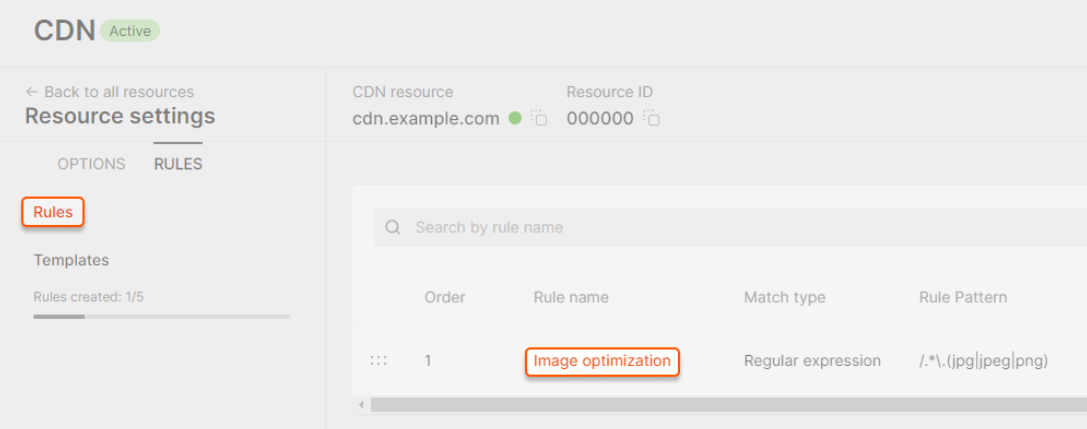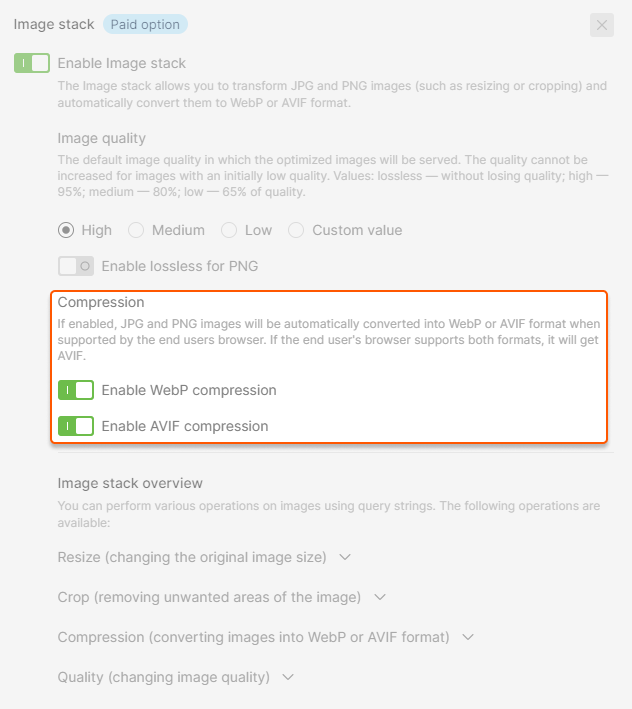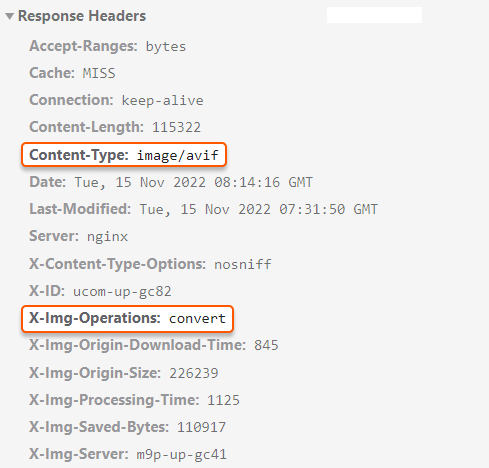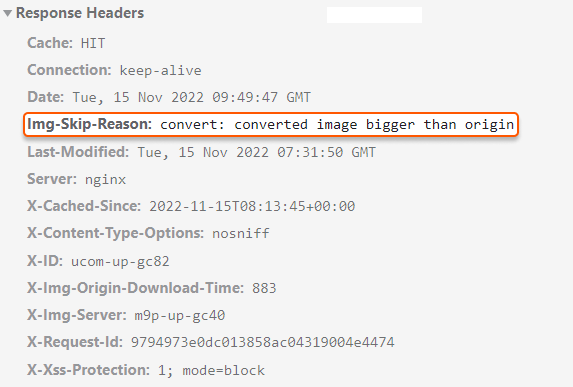About the compression feature
What is it? Compression is a feature that allows you to automatically convert of JPG and PNG images into WebP and AVIF format when delivering over the CDN. WebP and AVIF are modern optimized image formats with advanced compression algorithms. They help reduce image weight with no significant visible loss of quality. Below is a painting by Wassily Kandinsky in PNG, JPG, WebP, and AVIF formats. Sharpness and color rendering are the same, but the WebP and AVIF file sizes are smaller.- PNG (1860 KB)
- JPG (169 KB)
- WebP (136 KB)
- AVIF (113 KB)

Enable compression
Compression is included in the paid Image Stack option. This option helps optimize images, such as by converting them to WebP or AVIF formats, cropping them, or changing their quality and size. To use Compression, you need to activate the image stack according to the “Enable Image Stack” guide.Use compression
There are two ways to use the compression feature: in the Gcore Customer Portal and by query strings. If you want to apply WebP and AVIF compression to all images, use the first method. If you want to apply the compression to individual images for those you’ve added the necessary query strings, use the second one.Use compression in the customer portal
1. Go to the “Rules” section in the settings of that CDN resource you want to compress and open the Image optimization rule.

Use compression via query parameters
1. Open the website source code. 2. Find strings with the URLs of the images whose quality you want to change. 3. Add the query strings to the URLs of the images as follows:value is:
- webp (if you want to convert images into the WebP format)
- avif (if you want to convert images into the AVIF format)
- avif,webp (if you want to convert into both)
image.jpg?fmt=avif,webp.
4. Save the changes in the website source code. Images on the website will now be shown to the end-user in the format you set.
Check HTTP headers
After converting, an image does not change its URL or extension. So you can use the HTTP header value of the image to check if the changes have been applied. The X-Img-Operations header reflects all the conversions performed. If the value includes “convert”, the image size has changed. The Content-Type header shows the compression format. If the value is image/webp or image/avif, the image is in a new format.



